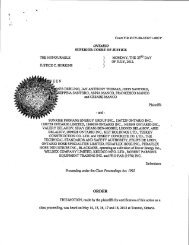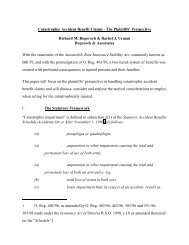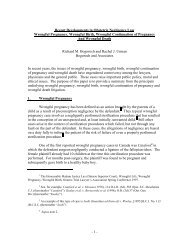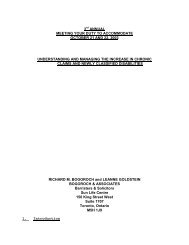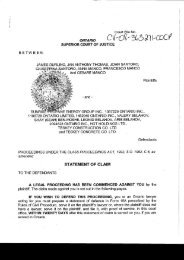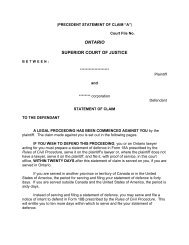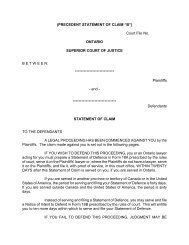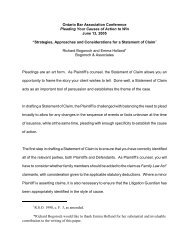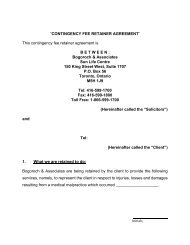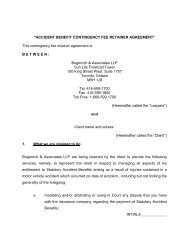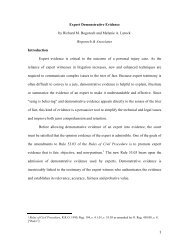"Thin Skull" Damages into "Crumbling Skull" Damages - Bogoroch ...
"Thin Skull" Damages into "Crumbling Skull" Damages - Bogoroch ...
"Thin Skull" Damages into "Crumbling Skull" Damages - Bogoroch ...
You also want an ePaper? Increase the reach of your titles
YUMPU automatically turns print PDFs into web optimized ePapers that Google loves.
-24-<br />
The same considerations apply when the plaintiff’s injuries are caused by events following the<br />
tortious act at issue in the action, as in the Callaghan case. The principle of full liability does not<br />
change, as the plaintiff must be returned to her original position, notwithstanding subsequent tortious<br />
acts. The Court recognizes the right of joint tortfeasors to seek contribution and indemnity from one<br />
another once the plaintiff has been fully compensated. Applying this approach, subsequent tortious<br />
acts, like non-tortious acts, do not reduce the extent of a defendant’s liability once material<br />
contribution is established.<br />
In general, Ontario courts have consistently applied the Athey principles with respect to causation<br />
and the assessment of damages. However, these principles, at least with respect to damages, were<br />
substantially altered in the Ontario Court of Appeal’s 2000 decision in Robinson v. Sydenham<br />
District Hospital Corp., as will be seen below.<br />
4. The Implications of the Ontario Court of Appeal’s decision in Robinson v. Sydenham<br />
Hospital: How the Court turned <strong>Thin</strong>-Skull <strong>Damages</strong> <strong>into</strong> <strong>Crumbling</strong> Skull Awards<br />
7. Athey v. Leonati: <strong>Damages</strong> Awarded to <strong>Thin</strong> Skull and <strong>Crumbling</strong> Skull Plaintiffs<br />
The Supreme Court of Canada in Athey provided courts with a definitive framework within which<br />
to assess damages sustained by a thin skull or crumbling skull plaintiff. Simply stated, in the case<br />
of a thin skull plaintiff where the tortious act is found to have materially contributed to the plaintiff’s<br />
injuries, the defendant is liable for all losses flowing from the tortious act, with no reduction in<br />
damages awarded based on the plaintiff’s original thin skull position. The fact that a plaintiff has



